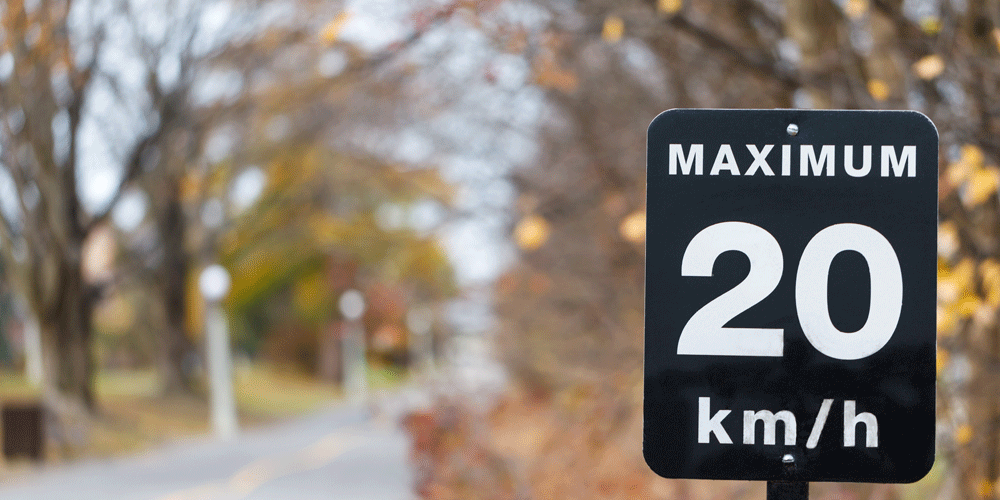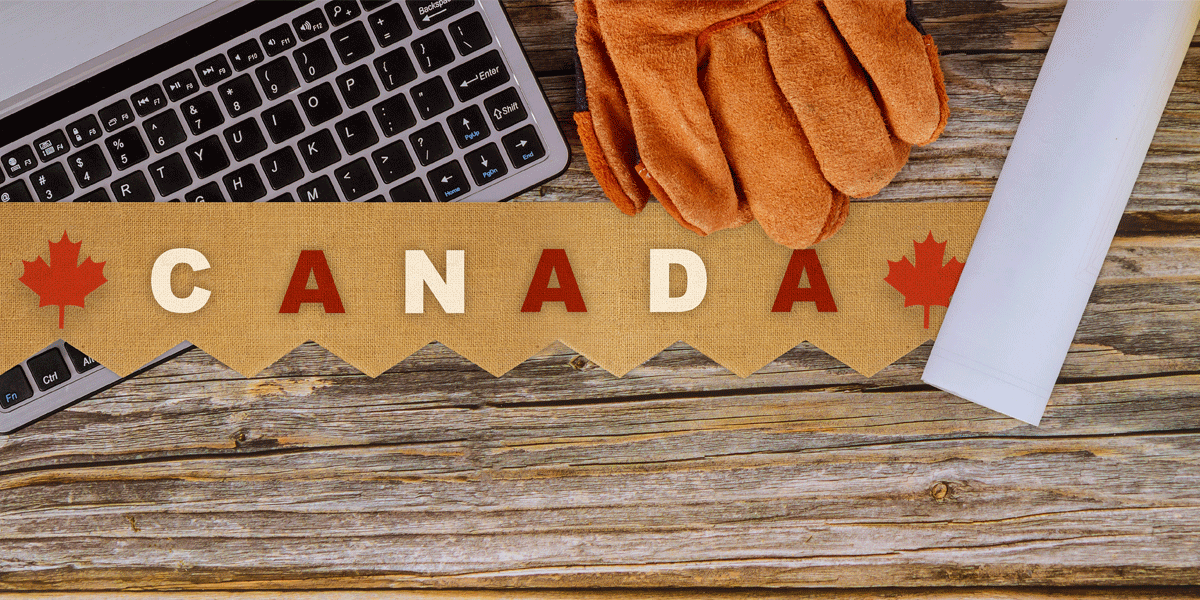What Should Truck Drivers Know Before Crossing Into Canada for the First Time?
James worked in construction for several years before becoming a truck driver. He always wanted to travel, so he went to trucking school and graduated in 2021. In his first year of trucking, he drove in the flatbed division at a great starter company. He'd see ATS drivers hauling really cool loads. He researched the company more and decided to make the move to ATS so he could move into the heavy haul division. He's been with ATS since and has gotten to haul really cool freight and drive through states he's never been to. He loves trucking and doesn't see himself stopping anytime soon.
Getting ready to hop over the border?
If you’ve never been to Canada, or maybe you’ve been there but not as a truck driver, there are some things you should prepare for.
A lot of drivers are excited about heading to the friendly country, but going over the border can feel pretty stressful — especially if you don’t know what to expect. There are certain things you can and can’t bring to Canada with you and there are specific things you need to have if you have any chance of crossing the border and coming back into the United States.
Should you be scared to cross the border? Absolutely not. But you do need to be prepared.
I recently crossed the border with my first load and while it was exciting, it was also a little nerve-racking. This article will provide you with some information I wish I’d known before I crossed.
As a truck driver bringing freight into Canada for the first time, remember:
- You (and your shipment) have to be cleared before crossing
- Have the correct paperwork
- Be prepared to answer questions
- Plan your trip
- Follow the rules of the road
- Don’t carry anything you shouldn’t
You’ll be prepared for your first trip to Canada by the time you finish reading.
Have the Proper Paperwork
Paperwork is key. If you don’t have the correct paperwork, you won’t be getting into Canada. Expect to turn right back around. Effective communication with your carrier will help you avoid running into this problem. Your carrier or the customer service team should understand the requirements of getting into Canada.
Before you can even think of running into Canada, your company needs to have the authority to haul in Canada. They have to obtain a Canada Border Service Agency (CBSA) issued carrier code. The unique code should be on your bill of lading (BOL).
You and your carrier will then use two systems to get into Canada and back into the U.S.: Pre-Arrival Processing System (PAPS) and Pre-Arrival Review System (PARS). PARS gets you into Canada as a commercial driver. PAPS gets you back into the U.S. You will attach barcode labels with this information to your BOL and send it to customs for clearance.
The systems are used to submit electronic data about the load(s) you’re hauling in and out of the country. Information about your shipment and your route is included. The barcodes should be scanned and the shipments approved before you get to the border by the U.S. Customs and Border Protection (CBP) or the Canada Border Services Agency (CBSA).
Your BOL is not just a shipment receipt, but it also provides in-depth details about the freight you’re hauling. This includes the type of freight, number of pallets, quantity, size and so on. If you’re hauling food or medication, you’ll need extra certificates. Your load may need to be inspected before you can cross.
If your shipment hasn’t cleared customs before you arrive at the border, you won’t be able to cross. Trying to cross before you’re cleared leads to hefty fines — up to $50,000 per instance.
If you have multiple shipments on your load, there will be separate paperwork for each load.
You need to make sure you have a hard copy of your CDL, proof of insurance and passport. Make sure your CDL and your passport aren’t expired.
You should also have important paperwork easily accessible in your cab carried at all times — such as tractor and trailer ownership, permits and insurance. To go into Canada, you’ll also need to make sure you have an International Fuel Tax Agreement (IFTA) sticker on the truck.
When Coming back to the U.S. from Canada, you’ll need an Automated Commercial Environment (ACE) manifest provided by the CBP. This provides details about the load.
As a reminder, be sure you have your:
- CDL
- Passport
- PARS
- PAPS
- BOL
- ACE manifest
- Insurance, permits and equipment ownership information
Be Prepared to Answer Questions
Just like a passenger vehicle crossing the border will be asked a slew of questions, so will you. Be prepared to answer them calmly. No need to get nervous or defensive. It’s part of the standard routine.
A lot of times border patrol officers will ask you to confirm what you’re hauling, where you’re coming from and where you’re going. Make sure your answers match your paperwork.
They may also ask when your load was sealed and who sealed it (if you’re hauling a van trailer).
If they notice something amiss, they’ll inspect your load.
Plan Your Trip
Trip planning is especially important. You’re driving in unfamiliar territory (literally). Not only should you know where you’re coming in, but make sure you know where you’ll be stopping for gas and parking to rest when you’re done driving.
If you come in at the incorrect border crossing, you may not be permitted to continue through to Canada. Each crossing requires clearance.
Be sure you check the weather before you start driving for the day and check it every time you stop. Keep your CB radio on, too, for updates from fellow drivers.
It's also always a good idea to carry extra food, water and warm clothes.

Follow the Rules
It should go without saying that you need to follow the rules of the road, but I’ll say it anyway.
Obviously, you shouldn’t be speeding in the U.S. either, but speed limits are often more heavily enforced in Canada than they are in the U.S. When I was in Canada on my first trip, I saw several semi-trucks pulled over for speeding.
Follow road signs closely.
Also, be sure you understand which regulations are different when it comes to e-logs and Hours of Service (HOS). You can do a 5/5 split in Canada. If you go into the settings of your e-log system, it’ll update it for you while you’re driving there. This allows you to split your break into two five-hour sessions.
In the U.S., you can only do an 8/2 split or a 7/3 split.
Related: Learn more about the split sleeper berth rule
You can also drive longer hours in Canada. You can work a 16-hour day (with 13 hours of driving time included in that window) and you’re only required to take an 8-hour break.
HOS tends to be stricter in the U.S., so as long as you’re following our regulations, you should be fine in Canada.
Don’t Carry Anything You Shouldn’t
Remember, you’re not just crossing a border into another state. You’re crossing into another country with a different government system and a whole different set of rules governing them. What may be allowed in the U.S. isn’t always allowed in Canada and vice versa.
This comes down to what you’re personally carrying on you in your truck. Things like weapons and alcohol aren’t allowed across the border. You shouldn’t be carrying alcohol in your truck anyway, and not a gun either, but Canada classifies certain things like pepper spray, brass knuckles and tasers as weapons and you can be stopped and turned away for carrying them.
There are certain food substances you can’t bring over the border either, due to trying to prevent the spread of foreign substances or pests. The same goes for bringing those products across the border back into the U.S.
Check out this list of what you can and can’t bring into Canada and the U.S.
It’s also important to note that Canadian regulations are much different than the U.S. when it comes to criminal background. Drivers with a criminal history (including misdemeanors) can’t cross into Canada.

Cross the Border and Open Up Your Freight Opportunities
Going to Canada is fun and provides a different experience for drivers. It can also be a fruitful opportunity. The first time you go, however, can be a bit intimidating — especially if you don’t know what to expect.
Just make sure you have the proper paperwork, prepare yourself for questions, plan your trip, follow the rules of the road and don’t carry anything you shouldn’t.
Going into Canada is just one way you can diversify your freight opportunities. Here are some other strategies to help you keep moving freight and making good money.
For even more resources about going into Canada, visit these frequently asked questions about hauling freight in Canada.

